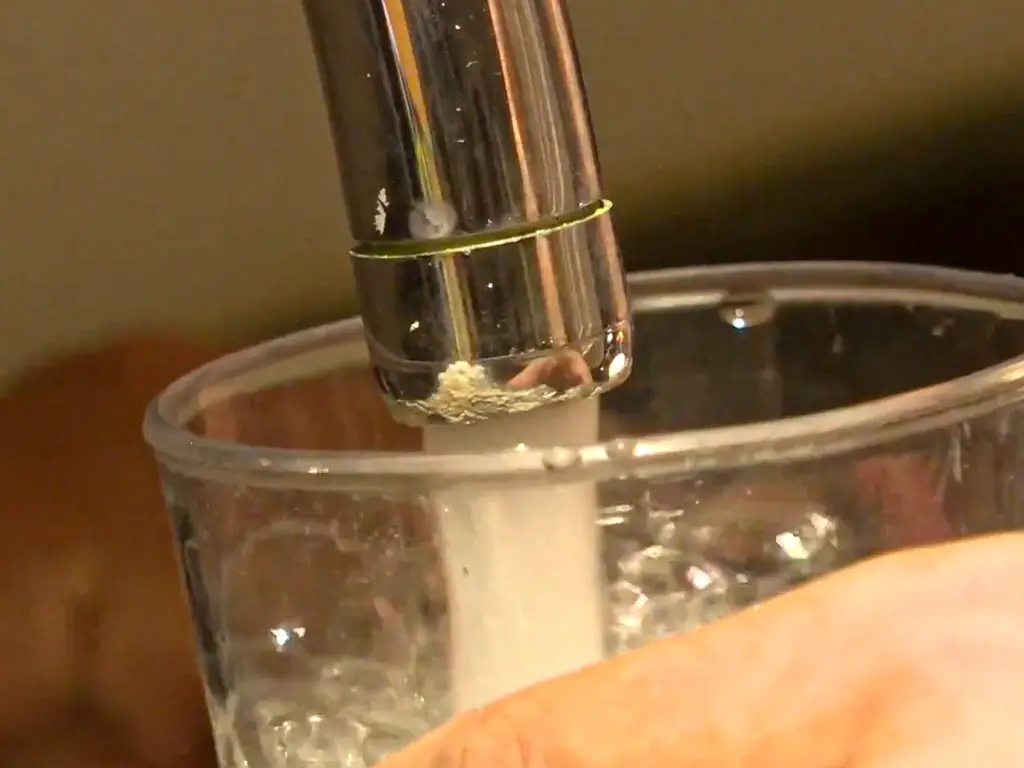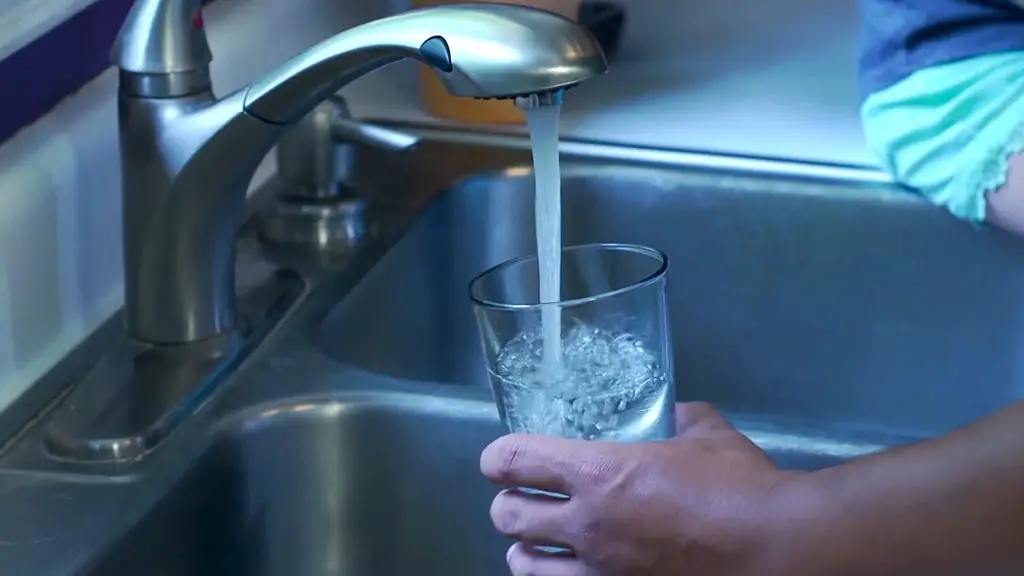In Washington, D.C., the safety and quality of tap water are fundamental concerns for residents and visitors alike.
The District of Columbia Water and Sewer Authority (DC Water) oversees the treatment and distribution of tap water, drawing primarily from the Potomac River.
DC Water employs rigorous purification processes at facilities like the Dalecarlia and McMillan Water Treatment Plants, ensuring that the water meets or exceeds federal and local safety standards set by the Environmental Protection Agency (EPA) and the District Department of the Environment (DDOE).
Despite historical challenges, such as lead contamination issues in the early 2000s, significant strides have been made to mitigate risks, including ongoing lead service line replacement programs.
Regular testing and transparent reporting through the Consumer Confidence Report (CCR) further reinforce the commitment to public health and water quality.
By following recommended precautions, such as using cold water for drinking and staying informed about water quality updates, residents can confidently enjoy tap water as a safe and reliable source for hydration and daily use in Washington, D.C.

Can You Drink Tap Water in Washington DC?
In Washington, D.C., the tap water is generally considered safe to drink. The District of Columbia Water and Sewer Authority (DC Water) is responsible for providing clean and safe drinking water to residents and visitors.
DC Water’s tap water meets or exceeds all federal and local standards set by the Environmental Protection Agency (EPA) and the District Department of the Environment (DDOE).
Treatment and Quality
DC Water sources its water from the Potomac River, which is one of the major rivers in the region.
The water undergoes extensive treatment processes at the Dalecarlia and McMillan Water Treatment Plants.
These plants utilize advanced technologies and methods such as coagulation, sedimentation, filtration, and disinfection to ensure the water is free from harmful contaminants.
The water treatment process includes continuous monitoring to ensure compliance with the Safe Drinking Water Act.
DC Water tests the water for over 100 different parameters, including microbial contaminants, disinfectants, disinfection by-products, inorganic chemicals, organic chemicals, and radionuclides.
The treatment process ensures that the water meets or exceeds the safety standards set by the EPA and the DDOE.
Lead Concerns
Washington, D.C. experienced significant lead contamination issues in the early 2000s, which led to a major overhaul in how the city handles water safety.
As part of the response, DC Water began replacing lead service lines and continues to do so. DC Water has implemented several measures to minimize lead exposure, including adjusting the pH of the water to reduce corrosion in pipes.
Residents can also take advantage of the free lead testing kits offered by DC Water to check the lead levels in their home’s tap water.
It’s advisable for residents to use cold water for cooking and drinking because hot water is more likely to leach lead from pipes.
Additionally, running the water for a few minutes can help flush out any potential contaminants that may have accumulated while the water was sitting in the pipes.
Regular Testing

The annual Consumer Confidence Report (CCR) published by DC Water provides detailed information on water quality, including data on the presence of any contaminants detected in the water supply.
This report is a valuable resource for residents to understand the safety and quality of their drinking water. DC Water maintains a high level of transparency by making testing results and reports easily accessible to the public.
This transparency helps build trust with the community and ensures that residents are informed about the quality of their water.
Public Information
DC Water provides a wealth of information on its website, including tips for maintaining safe drinking water, updates on infrastructure projects, and educational materials on the importance of water conservation and safety.
DC Water actively engages with the community through public meetings, workshops, and outreach programs.
These efforts aim to educate residents about water safety and encourage proactive measures to maintain water quality in their homes.
DC Water offers programs to assist homeowners in replacing lead service lines, often at a reduced cost or through financial assistance programs.
Information on how to participate in these programs is readily available on their website and through customer service.
Emergency Situations
In the event of an emergency, such as a major water main break or potential contamination event, DC Water has established protocols to quickly notify the public.
These notifications include boil water advisories or recommendations to avoid using tap water for drinking and cooking.
During such advisories, DC Water provides guidelines on how to ensure safe drinking water, including boiling water before use or using bottled water.
The agency works swiftly to resolve issues and restore safe drinking water as soon as possible.
DC Water uses multiple communication channels, including social media, local news, and direct notifications to residents, to ensure timely dissemination of important information regarding water safety.
What to Ensure Before Drinking Tap Water in Washington DC?

Before drinking tap water in Washington, D.C., there are several important considerations to ensure the safety and quality of the water:
Check for Lead Contamination
It’s crucial to determine if your home has lead plumbing components, as older buildings may still have lead service lines or fixtures.
Washington, D.C. has made significant strides in addressing lead contamination, but some homes may still be affected.
DC Water provides free lead testing kits to residents upon request, allowing homeowners to assess potential lead levels in their tap water.
If elevated lead levels are found, consider using a certified water filter that removes lead or replacing lead-containing plumbing components.
Flush Pipes if Water Has Been Sitting
After periods of inactivity, such as overnight or when returning from a trip, it’s advisable to run the cold water tap for several minutes before using it for drinking or cooking.
This practice helps flush out any stagnant water and potential contaminants that may have accumulated in the pipes. Flushing the pipes ensures fresher, cleaner water for consumption.
Stay Informed About Water Quality Reports
DC Water publishes an annual Consumer Confidence Report (CCR) that provides comprehensive information about the quality of tap water in Washington, D.C.
This report includes data on water sources, treatment processes, detected contaminants, and compliance with regulatory standards.
It’s essential for residents to review these reports to understand the current state of their drinking water and any measures taken to ensure its safety.
The CCR is typically available online and can be accessed through DC Water’s website or requested directly from the utility.
Use Cold Water for Drinking and Cooking
Cold water is less likely to leach contaminants from plumbing compared to hot water.
When preparing beverages or cooking, always use cold tap water for drinking purposes to minimize potential exposure to any substances that could be present in the plumbing system.
This simple practice helps maintain water quality and reduces the risk of consuming contaminants that may have accumulated in hot water tanks or pipes.
Consider Using a Water Filter
To further enhance water quality, consider installing a water filter that is certified to remove specific contaminants, such as lead, chlorine, pesticides, or microbial cysts.
Water filters can provide an added layer of protection by effectively reducing potential impurities that may be present in the tap water.
It’s important to select a filter that meets your household’s needs and to follow the manufacturer’s instructions for installation and maintenance to ensure optimal performance.
Monitor for Advisories or Alerts
Stay vigilant for any advisories or alerts issued by DC Water regarding the safety of tap water. Boil water advisories, for example, may be issued during emergencies such as water main breaks or contamination incidents.
If such advisories are in effect, follow the guidance provided by DC Water to ensure safe drinking water.
This may include boiling water before consumption or using bottled water as an alternative until the advisory is lifted.
Educate Yourself on Water Safety Practices
Take proactive steps to educate yourself and your household members about best practices for maintaining safe drinking water.
This includes routine inspection and maintenance of plumbing fixtures, understanding how to interpret water quality reports, and knowing how to respond in the event of a water-related emergency.
By staying informed and implementing recommended safety measures, you can help safeguard the quality of your tap water and promote a healthier living environment.
Frequently Asked Questions
Is tap water in Washington, D.C. safe to drink?
Yes, tap water in Washington, D.C. is generally considered safe to drink. It meets or exceeds federal and local standards for water quality set by regulatory agencies.
How can I check if there is lead in my tap water?
DC Water provides free lead testing kits to residents. You can request a kit to test your home’s water for lead contamination.
Should I use cold or hot water for drinking and cooking?
It’s recommended to use cold water for drinking and cooking to minimize the risk of leaching contaminants from plumbing, especially lead.
What should I do during a boil water advisory?
During a boil water advisory issued by DC Water, boil tap water vigorously for at least one minute before using it for drinking, cooking, making ice, or brushing teeth.
Where can I find the Consumer Confidence Report (CCR) for my area?
The annual Consumer Confidence Report (CCR) is available on DC Water’s website.
Conclusion
Tap water in Washington, D.C. is rigorously treated and monitored to ensure it meets stringent safety standards set by federal and local regulatory agencies.
The District of Columbia Water and Sewer Authority (DC Water) employs advanced purification methods at facilities like the Dalecarlia and McMillan Water Treatment Plants, drawing water from the Potomac River.
Despite past challenges with lead contamination, ongoing efforts such as lead service line replacements and pH adjustments have significantly improved water quality.
Regular testing and transparent reporting through the Consumer Confidence Report (CCR) provide residents with vital information on water quality.
By following recommended precautions such as using cold water for drinking and staying informed about water advisories residents and visitors can confidently rely on tap water as a safe and reliable source for hydration and daily use in the nation’s capital.
DC Water’s commitment to public health underscores its dedication to maintaining high standards of water quality and safety for all consumers.




LeRoy Haigler